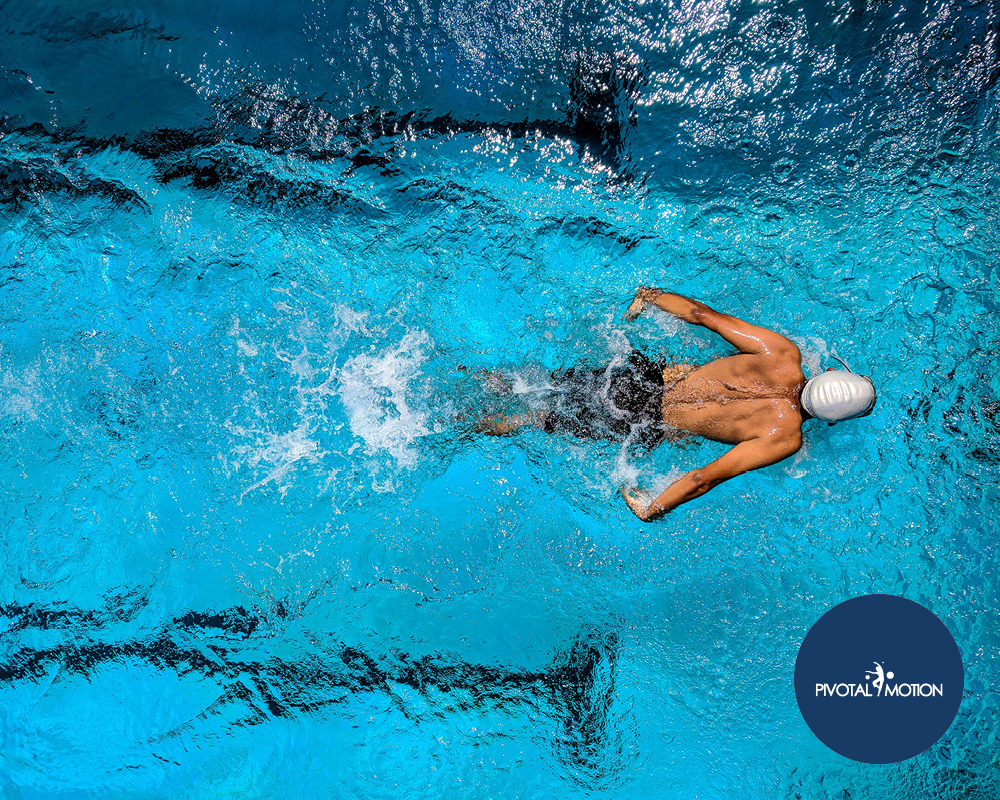
The Most Common Swimming Related Injuries

Swimming is Australia’s leading sport, with over 6 million Australians participating in swimming either regularly or occasionally in the last three months (Morgan, R. 2018).
As swimming is a low-impact sport, most people think that the chances of getting injured are small. However, what many may now know is that putting joints through repetitive motion with poor stroke mechanics may cause an overuse injury.
Most swimming injuries affect shoulders or knees, but it can affect hips or back as well, depending on the stroke. Taking part in a strength and conditioning program can help improve muscular and cardiovascular endurance, leading to better and more consistent stroke mechanics and thereby decreasing the risk of injury.
The most common injuries from swimming include:
- Swimmer’s shoulder – Irritation and inflammation in the shoulders
- Rotator cuff tendonitis or tears
- Shoulder impingement syndrome
- Tears in the cartilage around the shoulder socket
- Neck and low back pain
- Bicep tendonitis
Swimmers may also experience knee injuries caused by stress on the knees, resulting in pain under or around the kneecap or at the inside of the knee.
Causes of Swimming Injuries
Repetitive motion and overuse can lead to fatigue and failure to use proper stroke techniques. Small injuries and microtrauma can cause the shoulder to become unstable and lead to shoulder pain and tendinitis. Other repetitive injuries include inner knee and hip problems caused by breaststroke kicking, and back injuries from dolphin kicks or dry-land training.
- Overtraining
- Not enough rest periods
- Poor stroke mechanics
- Inadequate breathing technique
- Lack of flexibility or range of motion
- Decreased rotator cuff or shoulder blade (scapular muscle) strength
- Lack of core strength or stability
- Decreased hip muscle strength
Treating Swimming Injuries
The best approach to swimming injuries is prevention. Warming up before swimming and taking part in preseason and in-season strength and conditioning programs will help prevent injuries. Strength training should focus on:
- Rotator cuff and scapular muscles to improve stability of the shoulders
- Quadriceps (thigh muscles) and hip muscles to improve the kick, specifically for the breaststroke
- Abdominal muscles and core
Other factors that help prevent injury and speed up recovery:
- Communication between swimmer, coach and medical professional is critical to both injury prevention and recovery
- Using good stroke techniques
- Lessen repetitive strokes that are causing the overuse injury
- Core strengthening and cross-training exercises
- Consider alternative training techniques through injury time
- Use periods of rest to recover
- Rehab of rotator cuff and scapular strengthening & pelvic and hip strengthening
- Speak with a sports medicine professional/ physiotherapist
- Only return to play when clearance granted by health care professional
Tips for Improving Stroke Mechanics by UMPC Sports Medicine:
Freestyle stroke
- When breathing, keep the head in line with the body to avoid neck pain or numbness and tingling in the arms.
- Rotate the body toward the breathing side to avoid turning the neck too far and over-reaching with the arms.
- Breathe equally to both sides to prevent excess stress on one side of the neck.
Backstroke
- Weak muscles in the front of the neck will tire more quickly than strong ones, resulting in neck soreness with increased laps.
- Swimmers just starting to swim this stroke should gradually increase both distance and intensity.
- Rotating the body properly with each stroke also will help decrease stress on the neck and shoulders.
Breaststroke
- Keep the head in line with the body to avoid increased stress on the neck.
- Strong thigh and hip muscles will make for a stronger kick and a faster swim.
- Leg strength will also help decrease the stress and strain placed on the knees as swimming distance increases.
Butterfly
- Proper timing of this stroke decreases the possibility of neck, shoulder, or back pain.
- Focusing on a strong kick and upper body will aid in body position, as well as breathing.
For assistance in your swim training program, injury prevention or recovery, book in with one of our experienced sports physiotherapists at Pivotal Motion Physiotherapy. We can do up an individual strength and conditioning program and tailor treatment to your needs. Call us on 07 3352 5116 or book an appointment online anywhere, anytime!



